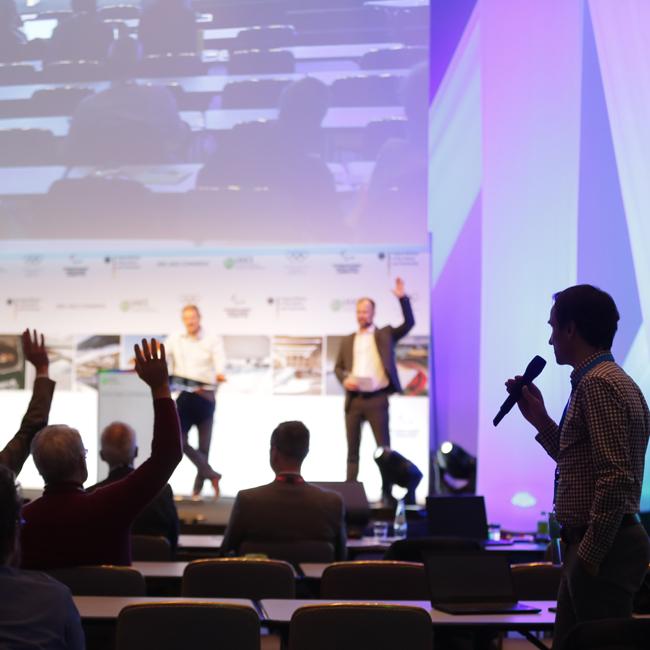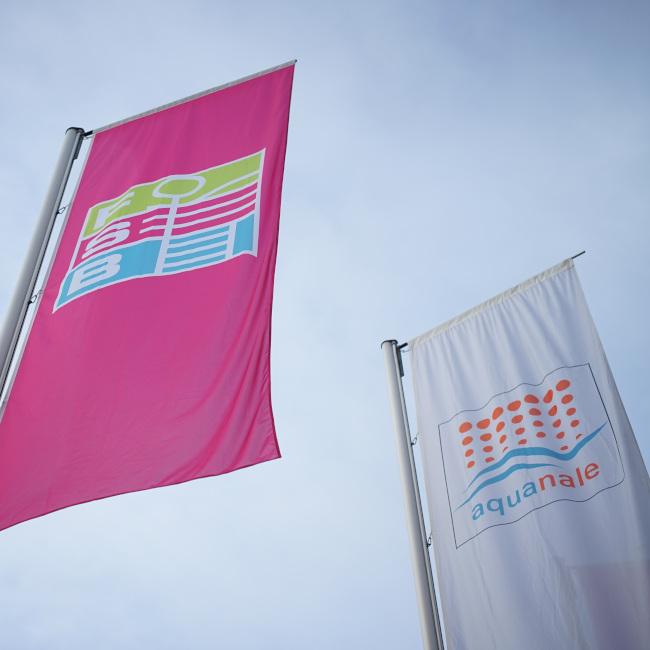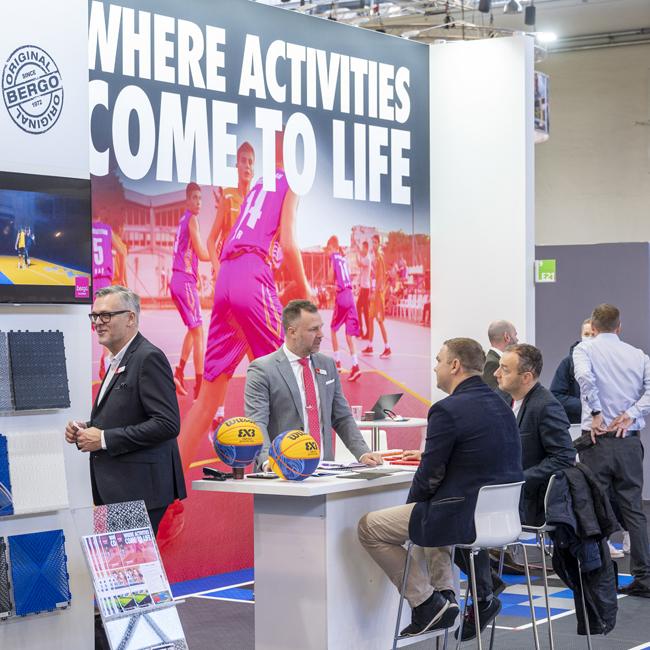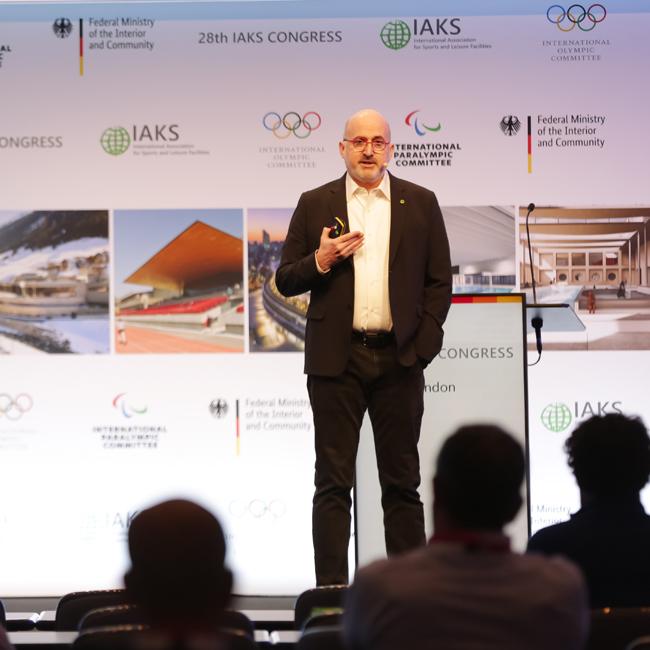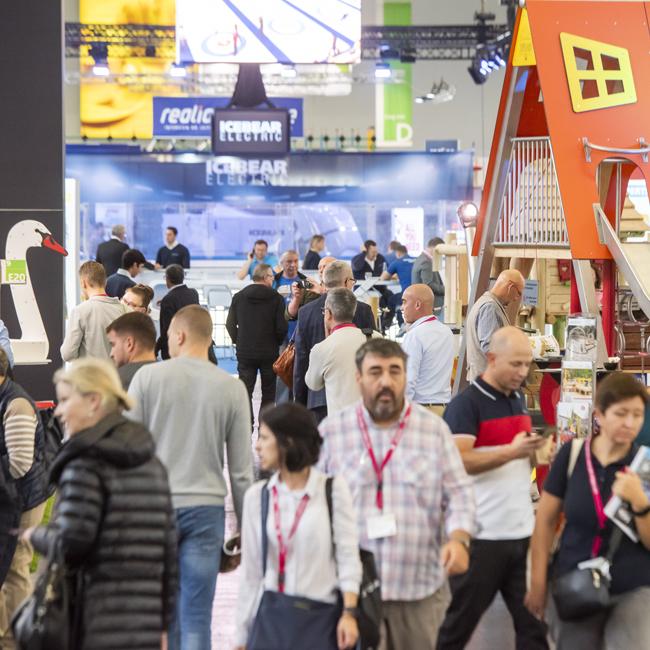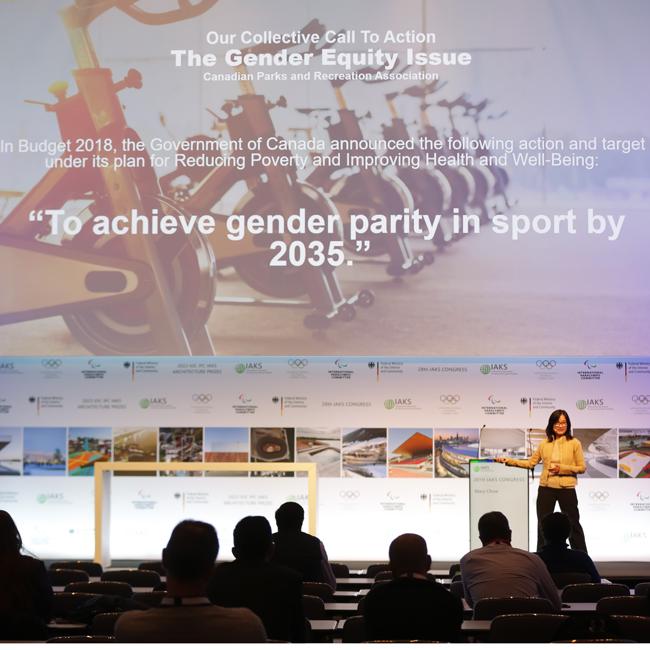Activating urban spaces
Outdoor facilities have something to offer all-year-round but are nevertheless at growing risk in terms of liability and vandalism. The first session of the third congress day, moderated by Karin Schwarz-Viechtbauer, Director of the Austrian Institute for School and Sports Facilities (ÖISS), illustrated what it takes for urban spaces to function successfully.
Florian Mathys, Division Manager of the sports department of the municipality of Basel, presented pumptracks as another way of encouraging biking in towns. They can be adapted to different levels of ability and vehicles, and can vary in size. The tracks are highly accessible and can be used for school and leisure purposes to promote biking in urban areas.
“Transforming schoolyards into local community activity areas” was the title of Lars Hjorth Baerentzen’s presentation. Rethinking schoolyards by opening them for local activity is one of the objectives pursued by the Danish Foundation for Culture and Sports Facilities. Schoolyards should serve as pleasant and secure “hang-outs”. Removing fences, enabling visibility and installing benches are key factors for activating schoolyards.
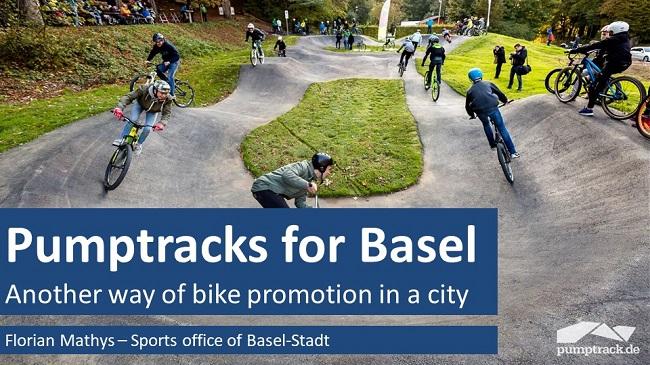
The feasibility study: A collaborative process for developing a project
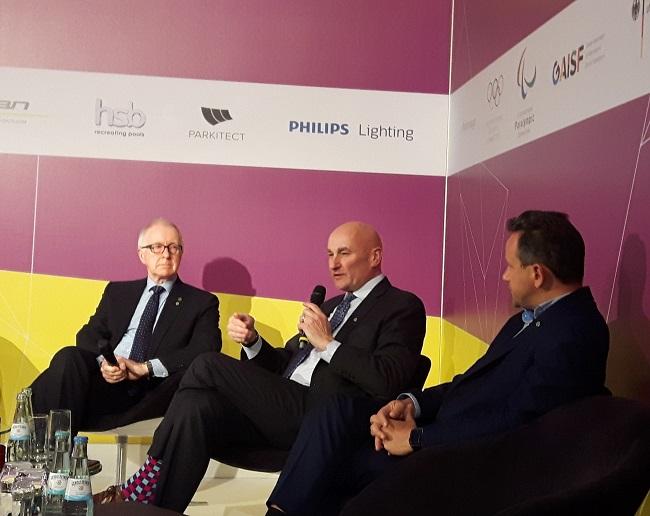
from left to right: Conrad Boychuk, Ron Bidulka, Zbigniew Klonowski
photo: IAKS
Moderated by IAKS Poland President Zbigniew Klonowski, this session showcased professionally prepared feasibility studies and business cases to illustrate how different tiers of government can be more confident about co-funding projects.
PricewaterhouseCoopers Managing Director Ron Bidulka presented a strategy for community sports, recreation and leisure facilities, which are generally programme-based. The critical driver is offering a diversity of activity programmes for all groups within a community.
Together with HDR I CEI Architecture Associates Senior Director Conrad Boychuk, Ron pointed out that, by comparison, multi-use spectator facilities are event-based. The critical driver is the event calendar and the ability to offer a diversity of ticketed events that respond to broad market opportunities. Conrad explained that architects often believe that the site is the most important context for a project. In fact it is the long-term economic impact that is the differentiator for funding partners and levels of government.
Trends in operating municipal and community sports and leisure facilities
Under the guidance of workshop moderator Wolfgang Becker, Jury Member of the 2017 IOC IPC IAKS Architecture Prizes and Director of the University and Provincial Sports Centre in Rif, Salzburg, Austria, challenges were discussed and expertise exchanged on future developments in operating public sports and leisure facilities.
Founder and Chair at AURA Holohan Group Gar Holohan gave advice on four vital components for financial sustainability: market potential, the appropriate mix and scale of quality facilities, the clarity of stakeholder roles and responsibilities, and outstanding management. Sustainability strategies need to be re-thought especially in the light of demographic change and health issues. In his view, the tendency to ignore lifecycle costs by focusing on capital costs is a main issue.
Prof. Peter Taylor added his ideas on public subsidies for sport and leisure to the discussion. The professor at Sheffield Hallam University advocated a targeted allocation of subsidies in contrast to the usual sector-wide grants procedure. Future challenges lie in declining subsidies coupled with increasing competition with the private sector at the same time. In return, better evidence of social return on investment in sport and leisure needs to be given to justify subsidies, while technology is to be implemented to reduce labour costs.
Innovative solutions for community sports and leisure facilities
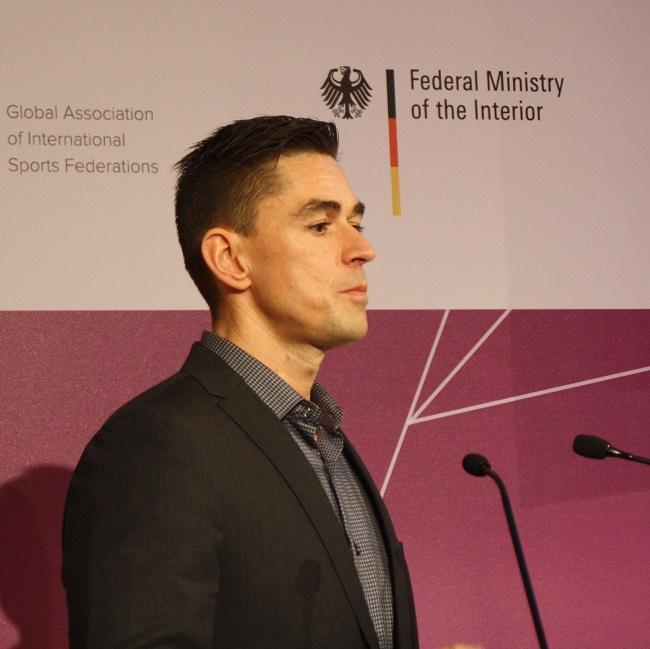
Lars Hjorth Bærentzen
photo: IAKS
This session focused on community sports and leisure facilities that are as much a venue for get-togethers and socialising as a place to engage in specific sports. While this requires a greater input of user expectations in the planning process, it also provides new opportunities for both enhanced revenue generation and improving the overall health of communities. Moderator Mike Hall, Partner at FaulknerBrowns Architects, discussed this with the panellists.
Awarded Bronze at the 2017 IOC IAKS Awards, Sergi Carulla and Oscar Blasco, both founders and architects of Scop Arquitectura I Paisatge, outlined the idea behind their skateparks in socially critical suburbs of Barcelona, Spain, which encourage social and physical activity by converting small, underused urban spaces.
How can communities build ties with municipal sports and recreation facilities? Presenting the example of the Clayton Community Hub in Surrey, Canada, HCMA Managing Principal Darryl Condon showed how the hub would be a place where a variety of experiences reveals unexpected opportunities for learning, discovery, and potential because the City of Surrey intends to combine the arts, a library, recreation and outdoor space. Elements of social and outdoor life such as a ‘tree hollow’, ‘bonfire’, ‘fort’ and ‘clearing’ are translated into architectural language.
According to Lars Hjorth Bærentzen of the Danish Foundation for Culture and Sports Facilities, body and mind go together in street sports and this attitude of freedom and a self-organised approach can be adopted for sports and leisure facilities. At the activity landscape of Harboøre, the social zone is in the middle of the skate area and green fields. Everything is in one place, so you do not have to move from the location to relax after exercise. Boundaries dissolve and the facility is attractive for all generations.
